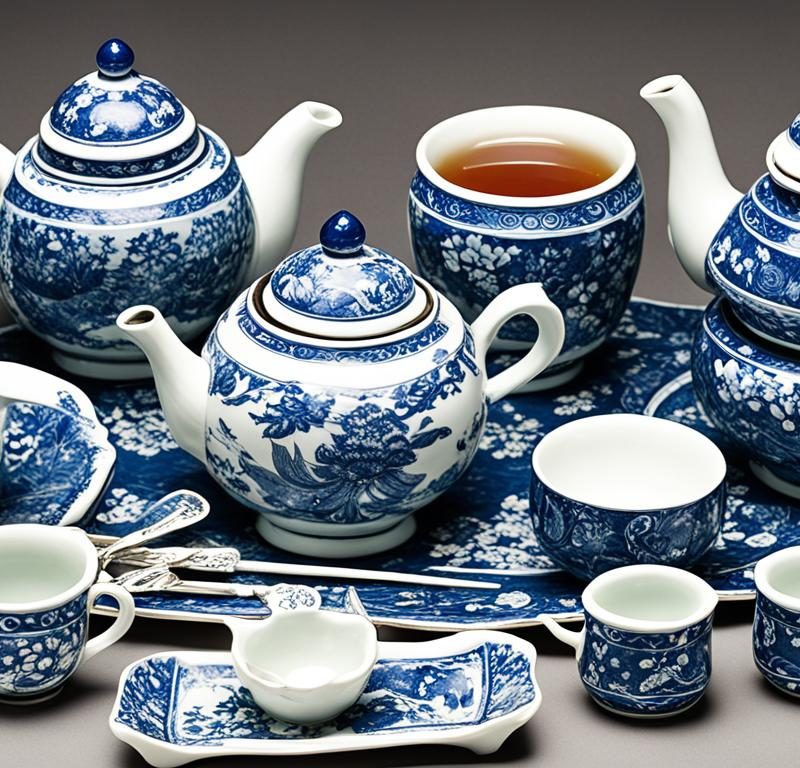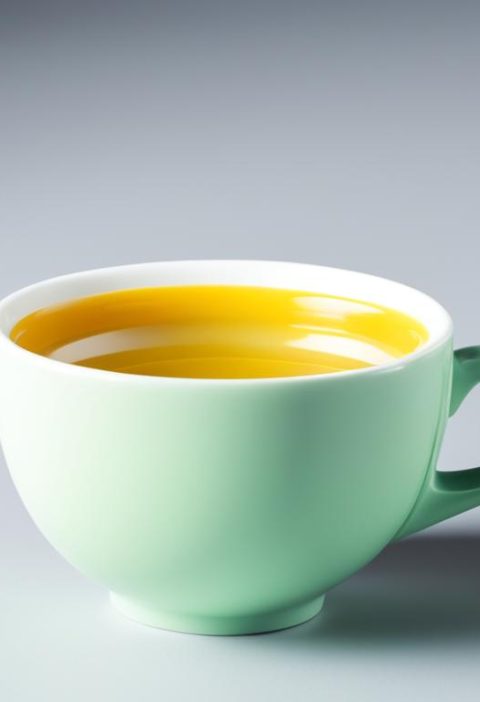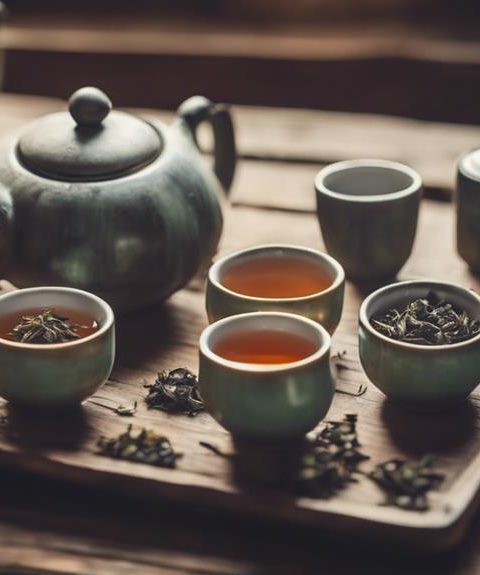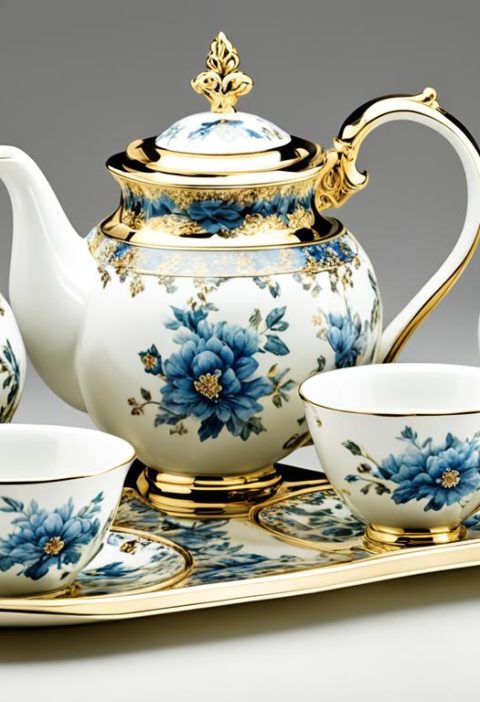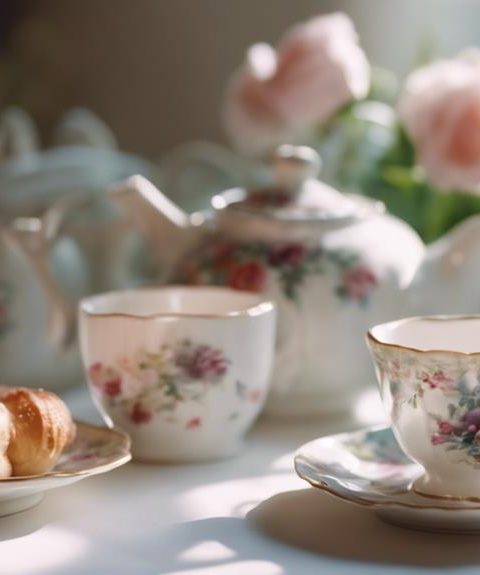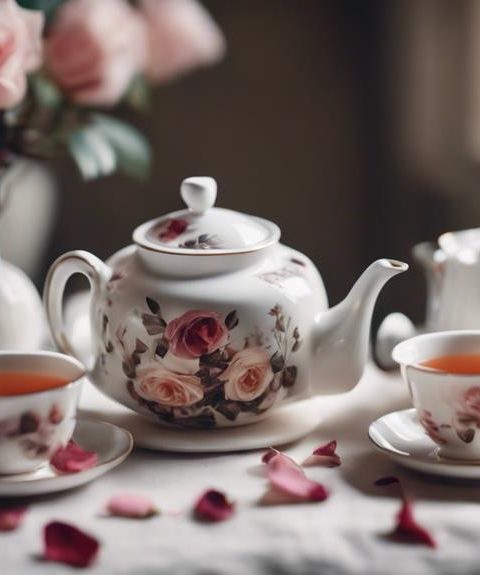Tea is more than a drink. It stands for culture and tradition. Each culture has its own tea customs and etiquette. This guide looks at how tea is enjoyed worldwide, from China’s formal ceremonies to South America’s mate sharing. We’ll explore the preparation, rituals, and cultural meaning of tea in various countries. Join us in discovering the world of tea set etiquette.
Who Drinks Tea and Who Doesn’t?
Though tea is popular globally, some don’t drink it. For example, Mormons avoid tea due to their faith. Jews and Muslims have specific rules for tea during religious events. It’s essential to know why some people avoid tea. This helps understand its meaning in different cultures.
Global Tea Consumption: A Glimpse Into Numbers
Tea drinking is growing worldwide. Statista reports a 24% rise in tea consumption from 2012 to 2020. With about 6 million kilograms of tea consumed, the demand is high. This shows tea’s significant role in various cultures.
The Cultural Significance of Tea
Tea means more than just a drink in many cultures. It can symbolize peace and self-reflection. In China, for example, the tea ceremony promotes being mindful. Recognizing how tea is culturally significant helps us appreciate tea customs around the world.
Rituals and Traditions Associated with Tea
Every country has its unique tea customs. These traditions are a window into how tea is valued. China and Japan, for example, have very different tea ceremony styles. By learning about these traditions, we can enjoy tea respectfully and with cultural awareness.
Tea Time Traditions by Country
Let’s look at how tea is prepared and enjoyed around the world. China has the Gongfu tea ceremony, while the UK is known for its elegant teatime. Each country brings its own flair to tea. By exploring these traditions, we can see the cultural richness of tea around the globe.
Conclusion
Tea etiquette shows the variety in global tea traditions. It brings people together and builds cultural understanding. By embracing different tea customs, we learn to value the traditions of tea worldwide. So, next time you sip tea, think of its cultural meaning too. Here’s to the intriguing world of tea etiquette!
Key Takeaways:
- Tea ceremonies and rituals vary across different cultures.
- Knowing why some people avoid tea helps us respect its cultural significance worldwide.
- Tea’s consumption is on the rise, showcasing its global appeal.
- Tea often symbolizes harmony, peace, and self-reflection in cultures.
- Each country has its unique tea customs and practices.
Who Drinks Tea and Who Doesn’t?
Tea is enjoyed by many worldwide, but not everyone drinks it. Reasons vary, highlighting the wide range of tea-drinking customs.
Why do some cultures not drink tea?
Some cultures skip tea because of religious or health reasons. Mormons, for instance, avoid it for their beliefs and dietary laws. The Jewish and Muslim cultures also restrict certain foods and drinks during religious times, which includes tea.
Are there cultures that traditionally do not drink tea?
Yes, some cultures have a much longer tradition with beverages like coffee or local herb drinks. In parts of Africa, coffee is more popular than tea.
What are the reasons for not drinking tea?
For personal choices, some folks just don’t like tea or have health concerns. They may enjoy different drinks or have dietary restrictions.
Does the lack of tea-drinking culture impact society?
The lack of tea drinking doesn’t harm a society. It shows how diverse traditions and customs can be. Each culture has unique drinking habits that form its identity.
Even though not all societies drink tea, it’s still valued where it is part of tradition. Now, we’ll look at how popular tea is globally next.
Global Tea Consumption: A Glimpse Into Numbers
Tea drinking is growing worldwide each year. It’s said that people drink millions of kilograms globally. In 2020, the total reached about 6 million kilograms, up by 24% from 2012, says Statista.
More tea drinkers mean more challenges for farmers, coping with this demand. Tea lovers globally celebrate its joys and health benefits.
The Rising Trend
Tea’s popularity is on the rise for a few reasons. People are more aware of its health benefits, like antioxidants. Also, the vast range of flavors meets different tastes.
This popularity isn’t in just one place. It’s a global trend, with people from all cultures embracing it. From morning tea at work to family tea times, it’s a household favorite.
Insights into Cultural Significance
Our tea-drinking habits reveal its deep cultural roles. For centuries, it has symbolized friendship and calm. Tea connects people, making it more than just a drink.
Studying tea stats shows varied cultural uses. We see how tea brings different societies together. It’s a universal link, uniting cultures.
Lets dive into tea’s global impact and cultural practices. The next part explores how tea connects traditions and people worldwide.
The Cultural Significance of Tea
Tea is more than just a drink in many places. It’s a way of life. It stands for peacefulness, balance, and reflection. Tea has shaped cultures for centuries. Look at the tea ceremony in China.
This ceremony is all about being mindful. It’s not just about drinking tea. It’s about connecting with people and yourself. Different cultures show their values through their tea customs.
In China, serving tea is a big deal. It shows respect and thankfulness. Tea ceremonies are like a beautiful dance. They bring people together in harmony.
Drinking tea can help you feel connected. It’s a tool for thinking and being aware. Taking time to brew and enjoy tea is like meditation. It lets you find peace in the moment.
There’s more to tea than China’s traditions. In Japan, the tea ceremony is sacred. It’s about peace, respect, and simplicity. The preparation itself is an art.
Morocco loves its mint tea. Pouring it from a height makes a foamy layer. This shows sharing and plenty. In India, chai means friendship and joy. It’s part of every gathering.
Tea isn’t just a drink; it’s a part of people’s lives. It joins different traditions. From tea ceremonies to casual chats over tea, it brings the world together.
Learning about tea shows us about other cultures. It lets us celebrate our differences. Tea is a small pleasure that connects the world in a big way.
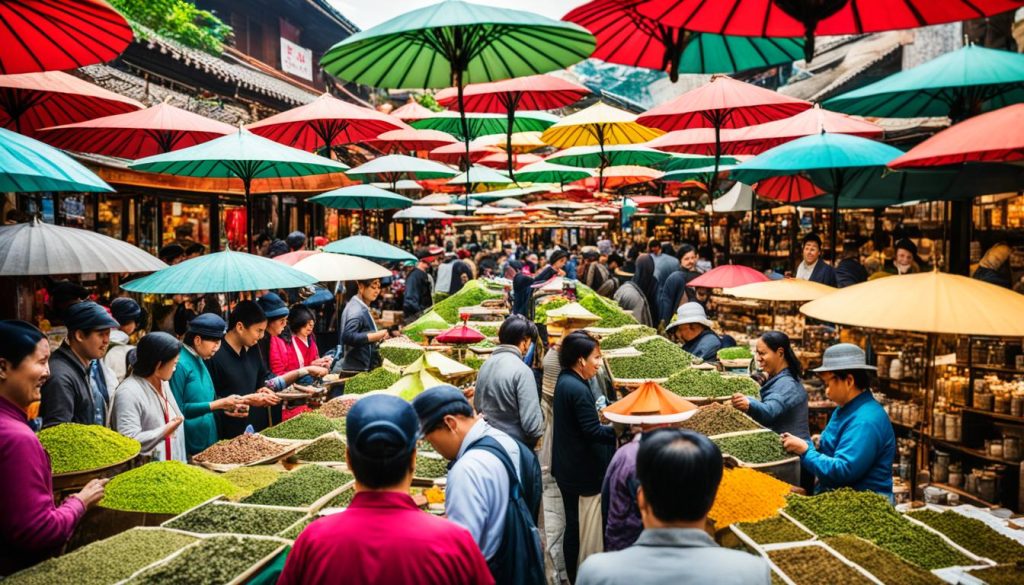
| Country | Tea Culture |
|---|---|
| China | The tea ceremony is a highly ritualistic process that promotes mindfulness and harmony. |
| Japan | The Japanese tea ceremony, known as chanoyu or sado, exemplifies principles of harmony, respect, purity, and tranquility. |
| Morocco | The preparation and serving of mint tea are deeply ingrained in social rituals and hospitality. |
| India | Chai is a symbol of warmth, hospitality, and togetherness, often shared among friends and during social gatherings. |
Rituals and Traditions Associated with Tea
Tea rituals change from place to place, showing different practices with tea. China’s tea ceremonies are formal and rigid, while Japan’s are calm and focused. Knowing these traditions helps us have respectful tea times.
What are some tea rituals?
Tea rituals are special activities done with tea. They show each society’s values and beauty. Chinese tea ceremonies focus on elegance and a quiet mind. They use careful motions and special tools.
Are tea traditions different in every country?
Yes, tea customs are very different worldwide. Each place has its own way of making and enjoying tea. Japan’s “chanoyu” is a formal, simple ritual. Meanwhile, the British enjoy a relaxed time with tea and snacks.
What is tea etiquette?
Tea etiquette means following certain rules while having tea. This includes how to drink tea and act around others then. It shows we respect tradition and helps make tea times peaceful.
What are some examples of tea etiquette?
Tea manners change by country, but some common rules are:
- Don’t blow on hot tea to cool it off.
- Hold the teacup by its handle or edge, never the inside.
- Stir the tea quietly, without making a lot of noise.
- Don’t put the spoon too far in the teacup.
- Say “thank you” when you get your tea.
What is the purpose of tea rituals?
Tea rituals have many goals based on culture. They help focus the mind and appreciate tea moments. They also bring people together for a special social activity. Plus, they symbolize values like harmony, thanks, and respect.
From China’s skilled tea-making to South America’s mate sharing, tea customs connect us globally. Learning these helps us enjoy tea more and understand its deep traditions.
Tea Time Traditions by Country
Tea goes beyond a simple drink. It’s an experience unique to each country. Join us on a trip to see how tea is prepared and enjoyed worldwide.
China: Gongfu Tea Ceremony
China highlights tea making as an art with its Gongfu ceremony. It uses small clay pots to brew teas like oolong and pu-erh. This ceremony values accuracy, patience, and the tea’s full experience.
Japan: Graceful Tea Ceremonies
Japan showcases tea in its elegant Chanoyu and Sado ceremonies. These highlight harmony, respect, and peace. Matcha, a type of powdered green tea, is served with careful, beautiful movements.
India: Spiced Masala Chai
India’s tea culture is seen in its famous Masala Chai. It’s a mix of black tea, milk, and spices like cardamom and ginger. This tea fosters a strong sense of community when shared.
Russia: Samovars and Tea Rooms
Russia’s tea traditions are tied to warmth and sharing. Samovars are used to prepare tea for guests. People enjoy a variety of treats and tea while chatting in comfortable rooms.
| Country | Tea Culture | Preparation Method |
|---|---|---|
| China | Gongfu tea ceremony | Meticulous brewing in small clay teapots |
| Japan | Graceful tea ceremonies | Precision preparation of matcha |
| India | Spiced Masala Chai | Blend of black tea, milk, and aromatic spices |
| Russia | Samovars and tea rooms | Heating and serving tea in ornate containers |
These examples are just the start of worldwide tea traditions. Each country’s ceremonial or everyday tea is a cultural treasure. A single exploration of tea traditions can lead to a world of discovery.
Conclusion
Tea etiquette shows the amazing variety in global tea customs. You can see this in the structured tea ceremonies of East Asia or the lively gatherings in South America. Tea connects people and helps us understand each other’s cultures. When you learn about different tea customs, you also grow to love the worldwide tea culture more.
When you have your next cup of tea, think about more than just its taste. Think about the stories behind the traditions and how different cultures see tea. Exploring how different countries celebrate tea can be really interesting. It shows the many colors of world culture.
So, you might enjoy a Chinese tea ceremony or a mate-sharing event from South America. Let tea open your mind to the many ways people celebrate this drink. Raise your cup high and celebrate the varied tea customs around the world. Cheers to that!
